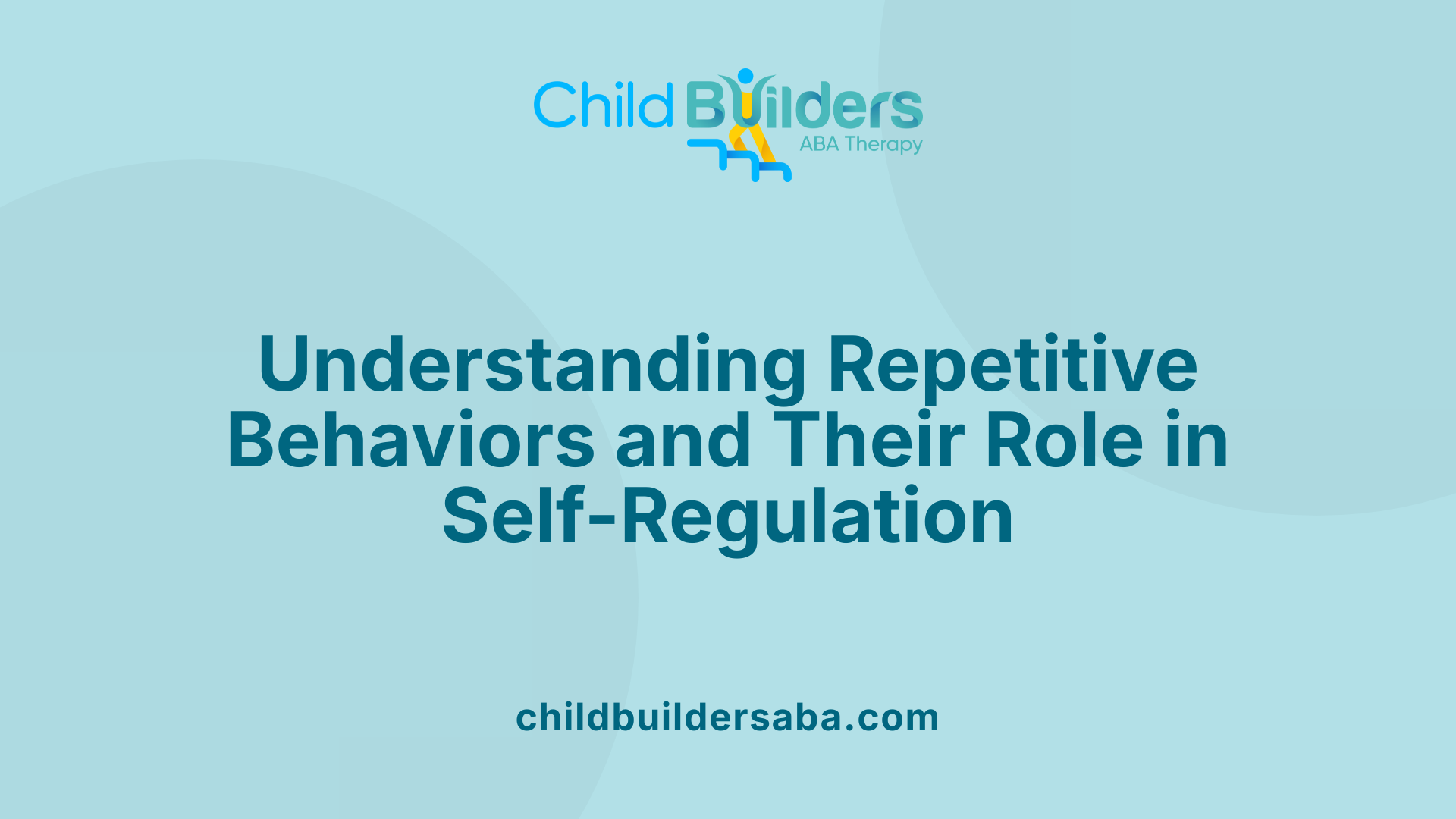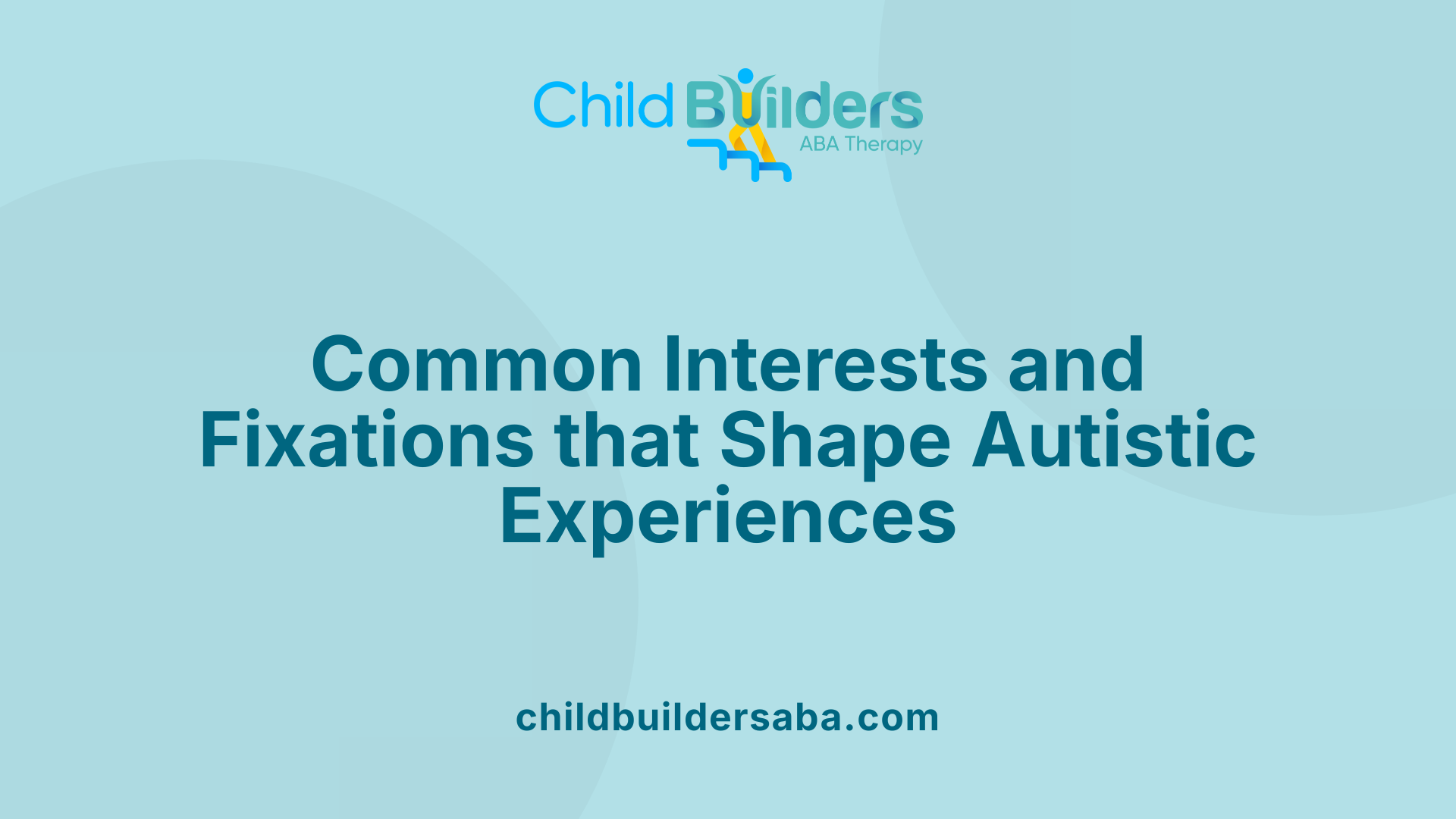Autism Obsessions

Exploring the Core Features of Autism
Autism spectrum disorder (ASD) is characterized by a combination of social communication challenges and restricted, repetitive behaviors and interests. These core features include fixations that can be lifelong or evolving, serving as both a source of comfort and a means of navigating the world. Recognizing and understanding these traits is essential for effective support, diagnosis, and management, fostering greater acceptance of neurodivergent individuals.
Core Features and Characteristics of Autism, Including Fixations and Obsessions

What educational information helps understand the core features of autism, including fixations and obsessions?
Autism spectrum disorder (ASD) is primarily characterized by challenges in social communication combined with restricted interests and repetitive behaviors. These core features shape how individuals with autism interact with the world around them.
A notable aspect of ASD is the presence of fixations, also called special interests or hyperfocuses. These are intense, deeply focused interests that can involve anything from art, music, and animals to vehicles, numbers, or routines. Such interests often develop early—around ages one to four—and usually last many years, sometimes decades. They can be so engaging that individuals may spend hours exploring their interests, collecting related items, or integrating these topics into play or art.
These fixations are not merely hobbies; they serve various functions in the lives of autistic individuals. Many find comfort, predictability, and self-regulation through their obsessions. Unlike obsessions in obsessive-compulsive disorder (OCD), which can cause distress and anxiety, fixations in autism are generally pleasurable, purposeful, and contribute positively to well-being.
In addition to fixations, autism includes repetitive behaviors or routines, such as lining up toys, flipping objects, or performing specific gestures repeatedly. These behaviors can help maintain a sense of order and security, especially in unpredictable environments. For many autistic people, routines and repetitive actions are essential for managing sensory overload or anxiety.
Understanding these core behaviors as part of autism is crucial. They are often beneficial, providing a sense of control, comfort, and happiness. Recognizing the function of fixations and repetitive behaviors helps foster acceptance and supports tailored strategies for engagement and development.
In summary, autism's main features encompass challenges with social communication and the presence of focused, often lifelong fixations. These interests and routines serve important roles in self-regulation and predictability, making them a vital aspect of understanding and supporting autistic individuals.
Common Fixations and Obsessions Among Autistic Individuals

What are common obsessions and fixations in autism spectrum disorder?
Autistic individuals often develop intense interests or fixations on specific objects, topics, or activities. These can include art, music, animals, numbers, patterns, vehicles, or routines. These fixations are characterized by a high level of focus and persistence, sometimes lasting a lifetime or shifting over the course of years.
Such fixations are generally pleasurable and serve important roles in self-expression, sensory regulation, or providing a sense of stability. They are often ego-syntonic, meaning individuals find them enjoyable and not distressing. Unlike obsessive-compulsive disorder (OCD), where intrusive thoughts cause anxiety and compulsions are performed to reduce that distress, fixations in autism usually serve as a source of comfort and self-regulation.
While these focused interests can drive motivation, creativity, and competence, they may also interfere with daily activities or social interactions if they become overwhelming or exclusive. Nonetheless, these fixations are a defining feature of autism, representing the restricted and repetitive patterns of behavior that are characteristic of the spectrum.
Are fixations in autism lifelong or do they change over time?
Autistic fixations can remain consistent or evolve throughout a person's life. Some interests, like a fascination with trains or a love for animals, might persist for many years, providing a continuous source of happiness. Others might develop or fade with age, influenced by environmental factors, personal growth, or new experiences.
Research indicates that the number of current interests can vary greatly; some studies report an average of two interests lasting around 13 years, while others observe as many as nine ongoing interests. This variability means fixations are adaptable, often evolving alongside an individual's maturation and changing environments.
How do fixations benefit or interfere with daily life?
Most fixations in autism are beneficial, offering comfort, motivation, and opportunities for mastery. They can improve mental health, boost self-esteem, and even enhance educational or employment outcomes when appropriately supported.
However, problems can arise when fixations become so intense that they dominate a person’s time or attention, making it difficult to engage in other necessary activities. For some, extreme focus might lead to neglecting social interactions or essential daily functions.
Therapeutic approaches aim to help individuals find a balance, encouraging engagement with interests while managing any negative impacts. Overall, understanding and respecting these fixations is crucial for supporting autistic individuals' well-being and development.
Examples of Obsessed and Highly Focused Interests in Autism

What are some examples of obsessive behaviors and highly focused interests in individuals with autism?
Individuals with autism often develop intense and highly specific interests that they pursue with great focus. Common areas include transportation, such as trains and cars, animals like dogs, cats, or exotic species, and sports such as soccer or basketball. Technology and electronics, including computers, video games, and robotics, are frequently subjects of fascination. Popular culture interests, like favorite movies, TV shows, or characters, are also prevalent.
Repetitive behaviors are typical and can include actions such as lining up toys or objects meticulously, hand-flapping, rocking back and forth, or spinning items. Some may fixate on specific routines or ways of organizing their environment, which can help them feel secure.
These interests tend to be lifelong pursuits or passionate hobbies that can last years and sometimes involve extensive research or collection efforts. For instance, a person might collect model trains or compile detailed information about planets. Often, these special interests serve not only as entertainment but also as coping mechanisms, providing comfort, predictability, and stress relief.
Participation in these interests can involve deep engagement, such as reading about a topic for hours, drawing related art, or exploring new facets of their hobbies. Some individuals develop social skills through shared interests, joining communities or clubs centered around their passions.
While these focused pursuits can sometimes interfere with daily tasks or social interactions, they generally offer numerous benefits. Engaging with interests can boost motivation to learn, help develop fine motor or organizational skills, and improve overall well-being by reducing anxiety and providing a sense of achievement.
Distinguishing Obsessive Behaviors in Autism from OCD
How are obsessive behaviors in autism different from those in obsessive-compulsive disorder (OCD)?
In autism, behaviors that appear obsessive are often centered around intense interests, routines, and self-soothing activities. These are generally ego-syntonic, meaning they align with how the individual sees themselves; they are not perceived as problematic or unwanted. For example, a person with autism might have a lifelong fascination with trains or a love for organizing objects in specific ways, finding comfort and happiness in these activities.
On the other hand, OCD involves obsessions—persistent, intrusive thoughts or fears—that cause significant anxiety. The compulsive behaviors performed are attempts to reduce this distress and are often ego-dystonic, meaning the individual recognizes these thoughts and actions as unwanted and contrary to their desires. For example, someone with OCD might repeatedly wash their hands because of a fear of contamination, despite feeling distressed about their compulsions.
While both autism and OCD feature repetitive behaviors, their underlying functions differ. In autism, these behaviors often serve as a way to manage sensory input or maintain predictability, contributing positively to the individual's sense of control. Conversely, OCD compulsions are driven by an urge to alleviate anxiety caused by specific intrusive thoughts.
Understanding these distinctions is critical for accurate diagnosis and choosing appropriate treatment strategies. Recognizing that autistic fixations are usually pleasurable and purposeful can help caregivers and clinicians support individuals in a way that respects their needs, while managing distress caused by OCD may require interventions aimed at reducing anxiety and compulsive responses.
This differentiation helps ensure that interventions are tailored effectively, whether emphasizing behavioral reinforcement and support for autistic interests or applying therapies like cognitive-behavioral therapy (CBT) and exposure-response prevention (ERP) for OCD.
Research Insights into Causes, Development, and Impacts of Obsessions in Autism
What research exists on the causes, development, and impacts of obsessive interests in autism?
Research into the roots and effects of obsessive interests in autism suggests a complex combination of genetic, neurobiological, and behavioral factors.
Genetically, these interests are associated with multiple genes that influence neurotransmitter systems such as serotonin, glutamate, and GABA. Studies indicate shared genetic pathways between autism and obsessive-compulsive behaviors, highlighting biological links.
Neurobiological differences are also significant. Autistic individuals often have atypical brain connectivity and sensory processing. These differences contribute to the development and persistence of obsessive interests, which often serve as sources of comfort and self-regulation.
Developmentally, these interests tend to be intrinsic and automatic. They become a core part of an individual's identity, unlike OCD obsessions, which are often unwanted and distressing. Autistic interests are generally pleasurable and voluntary, providing predictability and control.
The effects of obsessive interests are multifaceted. On one hand, they improve engagement and provide emotional stability, happiness, and a sense of purpose. On the other hand, they may interfere with social interactions and reduce behavioral flexibility, making it harder to adapt to new or changing environments.
In cases where obsessive interests overlap with OCD symptoms, challenges increase. OCD behaviors tend to be driven by anxiety and distress, complicating diagnosis and treatment. Understanding these differences is crucial for developing appropriate interventions that respect the individual's natural interests while addressing potential difficulties.
| Factors | Descriptions | Relevance |
|---|---|---|
| Genetic | Neurotransmitter gene involvement, shared pathways | Biological basis of interests |
| Neurobiology | Brain connectivity, sensory differences | Maintenance and emergence of interests |
| Developmental | Intrinsic, identity-forming interests | Personal growth and self-understanding |
| Impacts | Engagement, social skills, rigidity | Challenges and benefits in life |
Overall, ongoing research continues to deepen our understanding of how obsessive interests form and influence the lives of autistic individuals, informing better supportive strategies.
Balancing Engagement and Well-being
While fixations and intense interests are hallmark features of autism that contribute positively to self-regulation, identity, and skill development, they can sometimes interfere with daily functioning or social interactions. Understanding the nature of these obsessions, how they differ from OCD, and their neurological and psychological roots is essential for developing supportive management strategies. Therapeutic approaches like adapted CBT and behavioral interventions can help autistic individuals find a healthy balance, ensuring their passions bring joy rather than challenge their well-being, ultimately promoting a more inclusive and understanding environment.
References
- Autism and Fixation: Examples and How to Find Balance - Healthline
- Do autistic people have obsessions? What therapists say - NOCD
- Do autistic children have obsessions and compulsions? - PubMed
- Special interest (autism) - Wikipedia
- 'Obsessions' in children with autism or Asperger syndrome. Content ...
- OCD - National Autistic Society
- Autism and Obsession: An Overview - Golden Care Therapy



.jpg)

































































































